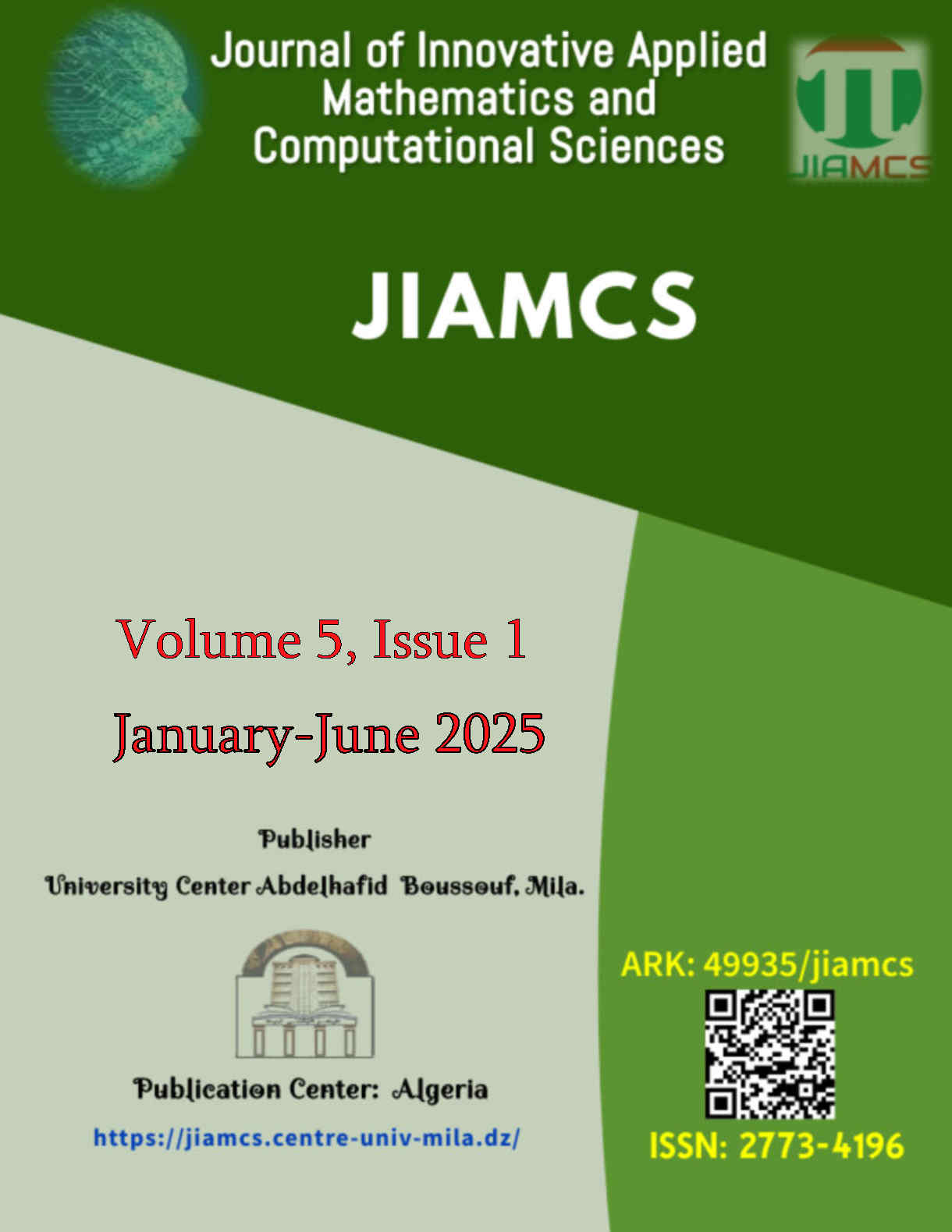Optimal control via FBSDE with dynamic risk penalization: a structuring formulation based on Pontryagin's principle
Main Article Content
Abstract
This paper introduces an innovative framework for dynamically optimizing consumption and investment decisions by integrating a risk penalization mechanism directly into the system’s dynamics. Leveraging Forward-Backward Stochastic Differential Equations (FBSDEs), our approach enables adaptive risk regulation in response to market fluctuations. We formulate the optimization problem, analyze the associated adjoint equations, and derive explicit characterizations of optimal strategies. Numerical simulations across multiple scenarios validate the robustness of the proposed method, demonstrating a significant reduction in terminal wealth variance compared to classical approaches. Our model thus offers a promising advance in dynamic financial risk management.
Downloads
Article Details

This work is licensed under a Creative Commons Attribution-NonCommercial-NoDerivatives 4.0 International License.
- Authors keep the rights and guarantee the Journal of Innovative Applied Mathematics and Computational Sciences the right to be the first publication of the document, licensed under a Creative Commons Attribution-NonCommercial-NoDerivatives 4.0 International License that allows others to share the work with an acknowledgement of authorship and publication in the journal.
- Authors are allowed and encouraged to spread their work through electronic means using personal or institutional websites (institutional open archives, personal websites or professional and academic networks profiles) once the text has been published.
References
[1] J.-M. Bismut, An introductory approach to duality in optimal stochastic control, SIAM Review, 20(1) (1978), 62–78. DOI
[2] T. Björk, Arbitrage Theory in Continuous Time, 3rd ed., Oxford University Press, Oxford, 2009.
[3] R. Elie, D. Possamaï and N. Touzi, A mean-field stochastic control approach to partial information and market impact, Mathematics of Operations Research, 47(1) (2022), 1–34.
[4] W.H. Fleming and H.M. Soner, Controlled Markov Processes and Viscosity Solutions, 2nd ed., Springer-Verlag, Berlin, 2006.
[5] J.-P. Fouque, G. Papanicolaou and K.R. Sircar, Derivatives in Financial Markets with Stochastic Volatility, Cambridge University Press, 2000.
[6] E. Gobet, J.-P. Lemor and X. Warin, A regression-based Monte Carlo method to solve backward stochastic differential equations, Annals of Applied Probability, 15(3) (2005), 2172–2202. DOI
[7] J. Han, A. Jentzen and W. E, Solving high-dimensional partial differential equations using deep learning, Proceedings of the National Academy of Sciences, 115(34) (2018), 8505–8510. DOI
[8] I. Karatzas and S.E. Shreve, Methods of Mathematical Finance, Springer-Verlag, New York, 1998. DOI
[9] M. Kohlmann and S. Tang, Global adapted solution of one-dimensional backward stochastic Riccati equations, with application to the mean-variance hedging, Stochastic Processes and Their Applications, 97(2) (2002), 255–288. DOI
[10] J. Li, H. Wang and J. Zhang, Optimal investment-consumption in markets with jumps via FBSDEs, arXiv preprint, arXiv:2303.14408, 2023.
[11] J. Ma and J. Yong, Forward-Backward Stochastic Differential Equations and Their Applications, Springer, 1999. DOI
[12] R.C. Merton, Optimum consumption and portfolio rules in a continuous-time model, Journal of Economic Theory, 3(4) (1971), 373–413. DOI
[13] E. Pardoux and S. Peng, Adapted solution of a backward stochastic differential equation, Systems & Control Letters, 14(1) (1990), 55–61. DOI
[14] S. Peng, Backward stochastic differential equations and applications to optimal control, Applied Mathematics and Optimization, 27(2) (1993), 125–144. DOI
[15] G. Wang, Z.Q. Xu and P. Zhang, Competitive optimal portfolio selection in a non-Markovian financial market: A backward stochastic differential equation study, arXiv preprint, arXiv:2408.02286, 2024. DOI
[16] J. Yong and X.Y. Zhou, Stochastic Controls: Hamiltonian Systems and HJB Equations, Springer, New York, 1999. DOI




